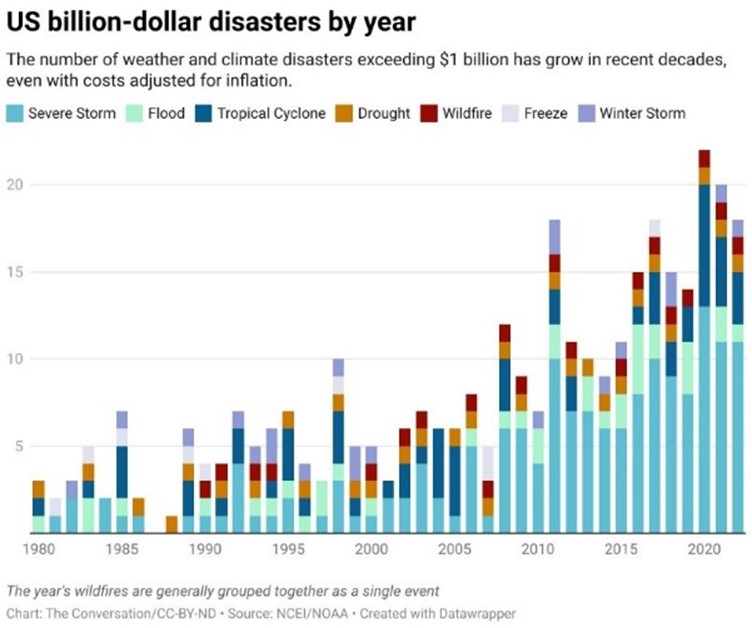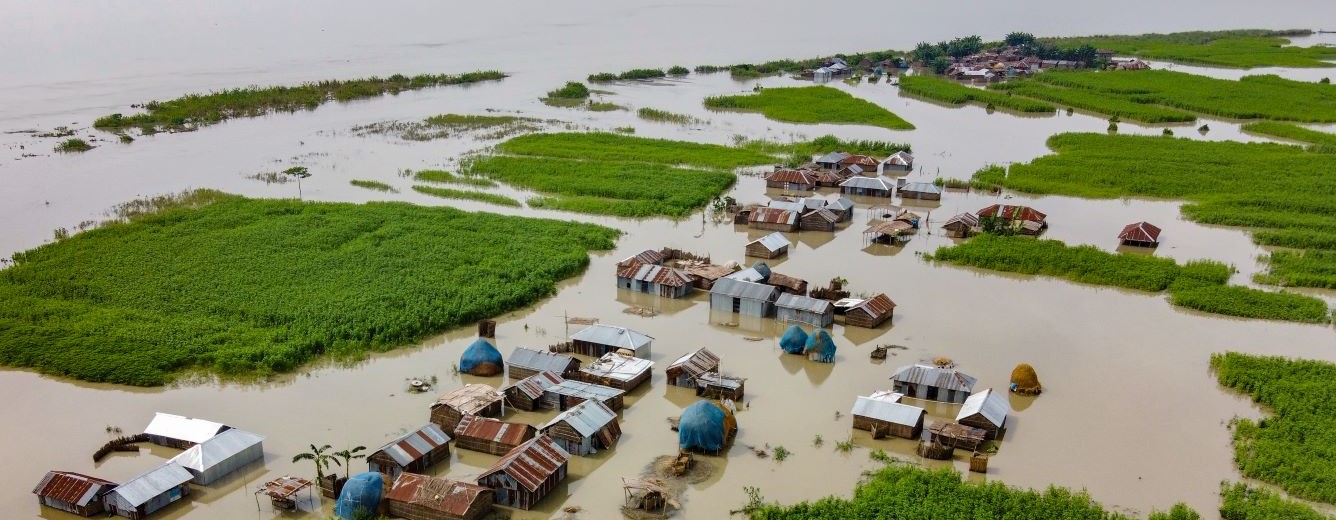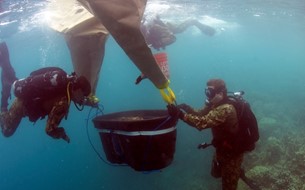Introduction:
Boxing legend, Mike Tyson once said, “Everyone has a plan until they get punched in the mouth.” America’s coastlines have been taking it on the chin, suffering blow after blow. All signs are signaling that the next round is just around the corner. The bell is ringing and the time to plan is now.
“In 2023 (as of October 10), there have been 24 confirmed weather/climate disaster events with losses exceeding $1 billion each, that have affected the United States” (National Centers for Environmental Information, NOAA 2023a). Most of these disasters are from storms occurring near coastlines. Over the last decade, the United States has experienced, on average, more than one disaster that has caused over a billion dollars in damages each month. To put this in perspective, until this past decade, the country rarely experienced a year with more than a handful of billion-dollar weather and climate disasters. (See Figure 1)

Figure 1: US billion-dollar disasters by year
You might be quick to attribute the rising cost of damages to global warming, sea level rise, and an increase in storm frequency and severity. While these factors exacerbate the problem, the biggest reason for the increasing cost of storm damage is due to the rise in coastal development. The prospect of waterfront living, picturesque landscapes, temperate climates, and abundant recreational activities have created an influx of Americans moving to the coast. Coastal counties of the U.S. are home to more than 128 million people. America’s coastlines are densely populated with almost 40 percent of population living in 10 percent of the nation’s land mass. Of that 40 percent, approximately 40 percent of people in these coastal areas fall into an elevated coastal hazard risk category. (Office for Coastal Management, NOAA 2023b)
Our Coastlines Play a Critical Role in America’s Economy
America’s coastlines serve as vital arteries for the United States economy, underpinning essential aspects such as trade, technology, and tourism. With more than 95,000 miles of shoreline, these coastal zones are not merely geographical features but also pivotal economic platforms that support the nation’s prosperity.
Coastal cities are often cultural and economic hubs, creating concentrations of residential, commercial, and industrial property. Trade is arguably the most significant economic activity leveraging America’s coastlines. The country’s ports are the gateways for international trade, handling billions of dollars in goods each year. Ports like those in Los Angeles, New York, and Savannah are among the busiest in the world, facilitating the smooth exchange of commodities, electronics, vehicles, and agricultural products.
Our coastlines provide an economic engine that keeps America churning which makes this an issue for the entire country.
Coastal Resilience
The National Oceanic and Atmospheric Administration defines coastal resilience as “building the ability of a community to ‘bounce back’ after hazardous events such as hurricanes, coastal storms, and flooding – rather than simply reacting to impacts.”
To protect coastlines and bolster coastal resistance the National Fish and Wildlife Foundation (NFWF)recently announced 27 awards totaling $44.7 million from its National Coastal Resilience Fund (NCRF), supported with funding through the Inflation Reduction Act. According to the NFWF, “These grants will support design and implementation of projects to enhance the resilience of coastal communities and improve habitat for fish and wildlife in states facing increasing impacts to their communities from storms and other coastal hazards.” By fortifying vulnerable coastal areas, these investments help prevent costly damage to homes, businesses, and critical infrastructure, ultimately saving money on disaster response, recovery, and rebuilding efforts.
Infrastructure
Coastal infrastructure refers to the physical structures and facilities built along coastlines to support and protect various human activities, including trade, transportation, tourism, and environmental protection. Resilient coastal infrastructure encompasses a range of protective measures designed to mitigate the impacts of coastal erosion, sea-level rise, and extreme weather events. These include traditional structures such as seawalls, breakwaters, and revetments, which provide physical barriers to wave and storm surges. However, modern coastal protection projects increasingly embrace natural and hybrid solutions.
Natural & Hybrid Solutions
- Mangroves: Mangroves, salt tolerant trees generally found in swampy tropical areas, act as natural buffers, absorbing wave energy and reducing erosion while providing critical habitats.
Courtesy of USACE
- Coastal dunes: Coastal dunes act as dynamic barriers, shifting and absorbing storm surges.
Courtesy of US Navy
- Coral reefs: Coral reefs act as natural breakwaters, reducing wave energy and protecting coastlines from erosion.
Courtesy of Commander Task Force 75
These natural elements play a vital role in coastal resilience. They enhance coastal protection and contribute to the health of coastal ecosystems, making them sustainable and environmentally friendly choices in the face of climate change.
Coastal Agencies and Commissions
State coastal agencies also play a crucial role in enhancing coastal resilience by overseeing and implementing a range of measures to protect and sustainably manage coastal areas. These agencies often develop and enforce regulations and zoning codes that guide responsible land use and development along coastlines. They facilitate the creation of comprehensive coastal management plans that consider the environmental, economic, and social aspects of resilience. State agencies also coordinate and support community-based initiatives, such as dune restoration projects and beach nourishment. Additionally, they provide funding and technical expertise to help communities prepare for and respond to coastal hazards, including storm surge, sea-level rise, and erosion. By promoting sustainable practices, fostering community engagement, and providing financial resources, state coastal agencies play a vital role in building coastal resilience, safeguarding natural ecosystems, and protecting the well-being of coastal communities.
Flood Insurance
Policy and regulations, particularly in flood insurance, can play a pivotal role in enhancing coastal communities’ resilience. Flood insurance mandates and incentives can encourage responsible land use planning and development in vulnerable coastal areas. By requiring property owners in high-risk zones to carry flood insurance, policymakers promote a better understanding of the potential risks and costs associated with coastal living, thus discouraging risky construction practices. Moreover, flood insurance programs often incorporate incentives for adopting mitigation measures, such as elevating structures or improving drainage systems, which can bolster a community’s ability to withstand flooding. These policies not only provide financial protection for residents but also promote sustainable development and the long-term resilience of coastal areas, reducing the social and economic burdens that disasters can impose on communities and governments.
Conclusion
The influx of people moving to the coast underscores the urgent need to invest in modern coastal resilient infrastructure, bolster state coastal agencies, and expand flood insurance programs. As coastal populations continue to grow, the vulnerability to the escalating risks associated with climate change amplifies. By prioritizing these investments, we not only safeguard the lives and properties of our coastal residents but also mitigate the escalating costs of damages that would result from unchecked coastal development. In this context, the proactive approach of fortifying our coastal defenses and promoting responsible growth becomes not only an economic imperative but also a vital step in securing the long-term resilience and sustainability of America’s precious coastal regions.
Scout strives to stay up to date on coastal policy in order to help our clients navigate through the regulatory storm. If you need any NEPA support, contact us today at: hello@scoutenv.com.
References:
National Centers for Environmental Information, NOAA 2023a. Billion-Dollar Weather and Climate Disasters. https://www.ncei.noaa.gov/access/billions/#:~:text=In%202023%20(as%20of%20October,and%201%20winter%20storm%20event. Accessed November 8, 2023.
Office for Coastal Management NOAA 2023b. Economics and Demographics. https://coast.noaa.gov/states/fast-facts/economics-and-demographics.html. Accessed November 8, 2023.
















